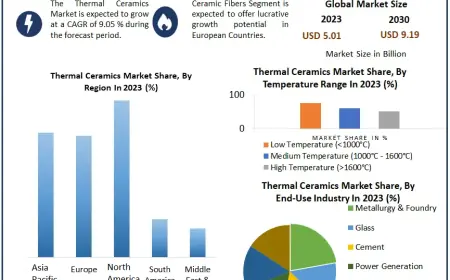Futureproofing Your Formula: Emerging Trends in Hair Supplements
The global hair supplements market is expected to reach more than USD 3180 million in 2030, with a CAGR of over 8% during the forecast period 2023-2030.

The Infinium Global Research analyzes the Hair Supplements Market over the period of 2023 to 2030. This report also provides detailed qualitative and quantitative analyses of the market dynamics, market size and future trends in global hair supplements market. It will help a lot of decision makers to develop strategies and find new opportunities in the global markets of hair supplements. The report covers market changing aspects including drivers, restraints, opportunities, and trends expected to encouragement the expansion of the hair supplements market during the period.
The global hair supplements market is expected to reach more than USD 3180 million in 2030, with a CAGR of over 8% during the forecast period 2023-2030.
Get Sample pages of Report: https://www.infiniumglobalresearch.com/form/749?name=Sample
Do big players control the price?
In the context of the hair supplements market, the question of whether big players control the price is pertinent. The hair supplements market, like many other consumer goods markets, is influenced by various factors including market competition, consumer demand, and the presence of major companies.
Given the content provided, the hair supplements market is experiencing significant growth due to increasing awareness about self-care, rising hair health issues, and the availability of various products. This growth is driven by multiple factors such as:
- Rising Demand: There is an increasing demand for hair supplements due to factors such as poor dietary choices, excessive use of hair chemicals, and genetic disorders leading to hair loss. This demand is further fueled by a growing number of self-conscious individuals who seek to maintain or improve their hair health.
- Market Segmentation: The market is segmented geographically and by product type, including different ingredients (vitamins, biotin, minerals), distribution channels (online, offline), and forms (capsules, pills, tablets). This segmentation suggests a diverse market with various players targeting different niches and consumer preferences.
- Presence of Major Companies: The market includes major players such as Church & Dwight Co., Inc., Country Life, LLC, Nestlé, Hairburst, Amway Corp., HUM Nutrition Inc., The Kroger Co., SWISSE INDIA, Sephora USA, Inc., and PHIMEDY. These companies have significant influence due to their extensive distribution networks, brand recognition, and marketing capabilities.
In terms of price control, while major companies do have substantial influence, the competitive nature of the market means that prices are also influenced by:
- Competition: The presence of multiple brands and products creates a competitive environment where companies must balance pricing with quality to attract and retain customers.
- Consumer Demand: As consumers become more aware of the benefits of hair supplements, demand can drive prices up. However, excessive pricing could lead to consumers switching to alternative brands or products.
- Innovation and R&D: Ongoing research and development in hair-related products can lead to the introduction of new and improved supplements, which can affect pricing strategies. Companies that invest in R&D may offer premium products at higher prices, justified by their enhanced efficacy or unique formulations.
Overall, while big players in the hair supplements market have significant influence and can affect pricing to some extent, market dynamics such as competition, consumer behavior, and innovation play crucial roles in determining the overall price structure.
Yes, companies do target youngsters for marketing their products, including hair supplements. Here’s how:
- Appealing to Beauty and Self-Care Trends: Young people are often highly conscious of their appearance and are interested in beauty and self-care products. Hair supplements, which promise healthier, thicker hair and reduced hair breakage, are marketed to appeal to these desires.
- Targeting Social Media Platforms: Many companies use social media platforms like Instagram, TikTok, and YouTube to reach younger audiences. Influencers and celebrities who resonate with younger demographics are often seen promoting hair supplements, making the products more appealing to this age group.
- Innovative Marketing Strategies: Companies use engaging content, testimonials, and before-and-after pictures to show the potential benefits of their hair supplements. This type of marketing is particularly effective with youngsters who are more likely to be influenced by visual content and peer recommendations.
- Emphasizing Convenience and Lifestyle: Young people often lead busy lives and may seek convenient ways to maintain their health and appearance. Hair supplements, available in easy-to-consume forms like capsules, pills, and tablets, fit well into their lifestyle.
- Leveraging Trends in Health and Wellness: The increasing focus on health and wellness among young people drives the demand for nutritional products. Hair supplements are often marketed as part of a broader wellness routine, which is attractive to health-conscious youngsters.
Regional Analysis
· Asia-Pacific: Poised to be the dominant region, driven by a growing population concerned about self-image.
· North America: Expected to experience significant growth due to a strong preference for nutritional supplements and a healthy Compound Annual Growth Rate (CAGR).
· Europe: Market expansion fueled by rising disposable income and increasing consumer spending power.
Report Overview: https://www.infiniumglobalresearch.com/market-reports/global-hair-supplements-market
Reasons to Buy this Report:
=> Comprehensive analysis of global as well as regional markets of hair supplements.
=> Complete coverage of all the product types and application segments to analyze the trends, developments, and forecast of market size up to 2030.
=> Comprehensive analysis of the companies operating in this market. The company profile includes an analysis of the product portfolio, revenue, SWOT analysis, and the latest developments of the company.
=> Infinium Global Research- Growth Matrix presents an analysis of the product segments and geographies that market players should focus on to invest, consolidate, expand, and/or diversify.
Conclusion:
In conclusion, companies strategically target youngsters for marketing their products, including hair supplements, by tapping into their interest in beauty, self-care, and health trends. By leveraging social media platforms, influencer endorsements, and visually engaging content, companies effectively reach younger audiences. The convenience and lifestyle compatibility of hair supplements further enhance their appeal to busy, health-conscious youngsters. This targeted marketing approach not only drives demand but also contributes significantly to the growth of the hair supplements market. As the focus on personal appearance and wellness continues to rise among the younger demographic, the market for hair supplements is poised for sustained expansion.
What's Your Reaction?
 Like
0
Like
0
 Dislike
0
Dislike
0
 Love
0
Love
0
 Funny
0
Funny
0
 Angry
0
Angry
0
 Sad
0
Sad
0
 Wow
0
Wow
0















































